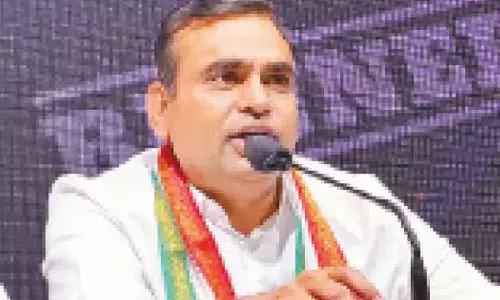Legislative relations between Union and State

The Constitution, based on the principle of federalism with a strong and indestructible Union, has a scheme of distribution of legislative powers designed to blend the imperatives of diversity with the drive of a common national endeavour.
The Constitution, based on the principle of federalism with a strong and indestructible Union, has a scheme of distribution of legislative powers designed to blend the imperatives of diversity with the drive of a common national endeavour.
In this respect our constitutional theory as well as practice have kept pace with contemporary developments. The current trends emphasise cooperation and coordination, rather than demarcation of powers, between different levels of government.
The basic theme is inter-dependence in orchestrating the balance between autonomy of the States and the inner logic of the Union.
The Constitution adopts a three-fold distribution of legislative powers by placing them in any one of the three lists, namely I (Union List), II (State List) and III (Concurrent List). Articles 245 and 246 demarcate the legislative domain, subject to the controlling principle of the supremacy of the Union which is the basis of the entire system.
The Concurrent List gives power to two legislatures, Union as well as State, to legislate on the same subject. In case of conflict or inconsistency, the rule of repugnancy, as contained in article 254, comes into play to uphold the principle of Union power.
The Concurrent List expresses and illustrates vividly the underlying process of nation building in the setting of our heterogeneity and diversity. The framers of the Constitution recognised that there was a category of subjects of common interest which could not be allocated exclusively either to the States or the Union.
Nonetheless, a broad uniformity of approach in legislative policy was essential to combine specific requirements of different States with the articulation of a common national policy objective. Conceived thus, harmonious operation of the Concurrent List could well be considered to be creative federalism at its best.
The problems that have attracted attention in the field of Union-State relations have less to do with the structure or the rationale of the Concurrent List than with the manner in which the Union has exercised its powers.
In a fundamental political sense, the passing of one party dominance that characterised the first four decades of the Republic has also ended the drive towards overcentralisation. Even the powers that unquestionably belong to the Union, for example the power to temporarily assume the functions of a State Government under article 356, are heavily circumscribed by the political reality of a multi-party system where the States have acquired significant bargaining power vis-à-vis the Government of India.
The evolving political system has thus imparted considerable vitality to the federal impulses of the Constitution. However, what has been gained in the actual practice of legislative relations between the Union and the States, in terms of restoring the balance inherent in the constitutional scheme, has not entered the realm of institutional validation.
To this extent, the unilateralism of the Union in regard to the exercise of legislative powers under the Concurrent List remains a potential problem area. The principal critique of concurrency is not that it is not required, but that it is used without consultation, that it is not exercised to deepen inter-dependence and co-operation but to stress dominance of the Union point of view.
It has to be conceded that institutional arrangements for facilitating exchange of views between the States and the Union on matters falling within the field of concurrent legislation leave something to be desired. This has happened in spite of the existence of the Inter-State Council under article 263.
The Council has yet to develop into a mechanism to be relied on for an ongoing process of dialogue on vital socio-economic and political issues between the Union and the States and among the States. It is not as if such consultation is absent.
There are Chief Ministers’ Conferences on specific issues. There are State Ministers’ Conferences on a variety of subjects on which common policy positions have to be formulated, such as Value Added Tax and GST system.
There is, however, no formal institutional structure that requires mandatory consultation between the Union and the States in the area of legislation under the Concurrent List which covers several items of crucial importance to national economy and security.
Even the National Development Council, whose ambit may occasionally be widened beyond the Five Year and the Annual Plans, is seldom convened to test ideas and evaluate experience in policy formulation and implementation in areas where both the Union and the States are interested for the sake of social and economic development.
The Concurrent List provides a fine balance between the need for uniformity in the national laws and creating a simultaneous jurisdiction for the States to accommodate the diversities and peculiarities of different regions. This also provides a distinguishing feature in the federal scheme envisaged by the framers of the Constitution.
This is further reinforced by placing a mode of altering the provisions in lists I,II and III in the 7th schedule among other matters of provisions substantive in nature and basic to the structure of the Constitution that fall within the purview of the proviso to clause (2) of Article 368.
A bill for amending the list in the 7th schedule has to be passed by Parliament by a majority of the total membership of that House and by a majority of not less than 2/3rd of the members of the House present and voting – and followed by ratification of legislatures of not less than ½ of the States.
This mechanism provides a statutory tilt in favour of consultation and cooperation with the States in matters pertaining to the Legislative sphere and inherent balance between flexibility and rigidity.
Globalization as a phenomenon has created a great deal of mobility of goods, services, capital, technology; integrating the world trade far more than ever before. There are also related concerns arising out of a need for a better and sustained use of resources of the earth as a planet that call for a much greater coordination in identification and formulation of responses among the nations.
This process of cohesive and concurrent action needs to generate, first-of-all within the national context. The geographical climate, environmental, technological diversities amongst States have to be harmonized in order that these may link with global processes for viable sustained, development and growth.
A major field of undertaking new initiatives in these spheres would lie in the legislative domain where a certain concurrences and coherence between the States and their different needs have to be harmonized to evolve national policies. This is also reflected in issues that pertain to technology, trade, financial services etc. in the global context.
The Commission examined the constitutional provisions regarding concurrent powers of legislation, analysing the constitutional amendments that had been enacted from time to time and the judicial pronouncements on major issues arising from concurrency. The view that emerged was that there was no ground for change in the existing constitutional provisions.
The Commission believes that on the whole the framework of legislative relations between the Union and the States, contained in articles 245 to 254, has stood the test of time.
In particular, the Concurrent List, List III in the Seventh Schedule under article 246 (2), has to be regarded as a valuable instrument for consolidating and furthering the principle of cooperative and creative federalism that has made a major contribution to nation building.
The Commission is convinced that it is essential to institutionalise the process of consultation between the Union and the States on legislation under the Concurrent List.
The Commission recommends that individual and collective consultation with the States should be undertaken through the Inter-State Council established under article 263 of the Constitution. Further, the Inter-State Council Order, 1990, issued by the President may clearly specify in 4(b) of the order the subjects that should form part of consultation in the Inter-State Council.
Suggestion for a new entry in the Concurrent List – Management of Disasters and Emergencies, Natural or Man-made. The Commission has examined a suggestion made by the Union Ministry of Agriculture that “Management of Disasters and Emergencies, Natural or Man-Made” be included in List III of the Seventh Schedule, and agrees to the suggested inclusion.








